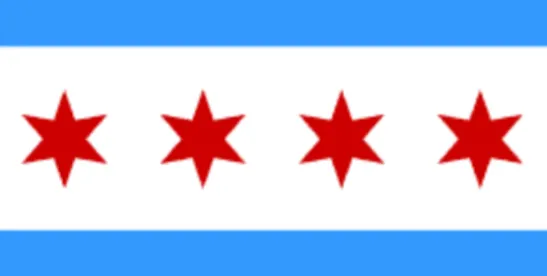Beginning on July 1, 2024, employers in Chicago must begin to comply with significant new obligations that further complicate a tangle of state and local laws mandating paid leave.
As we previously detailed, the Chicago City Council initially adopted the Chicago Paid Leave and Paid Sick and Safe Leave Ordinance (the “Chicago Ordinance” or “Ordinance”) on November 9, 2023. After the original adoption, the City Council modified the Ordinance and delayed its effective date to July 1, 2024. With this date fast approaching, employers with employees who work in Chicago must be ready to implement these new obligations.
What’s New and What’s Changing
On May 1, 2024, the Chicago Department of Business Affairs and Consumer Protection (BACP) Office of Labor Standards released final rules interpreting the Ordinance. The BACP also posted a fact sheet summarizing the law’s major provisions.
The new ordinance, which builds on existing law that already mandates paid sick leave, continues to require that employers provide covered employees the ability to earn up to 40 hours of Paid Sick Leave (i.e., leave that can only be used for enumerated reasons explained below) in a 12-month period. As of July 1, however, the accrual rate will increase to one hour of leave for every 35 (rather than 40) hours worked. The Ordinance also adds a new requirement: eligible employees will gain up to 40 additional hours of Paid Leave that can be used for any reason. These requirements, applicable to nearly every employer with Chicago-based employees, will provide covered employees with the opportunity to earn up to 80 total hours of paid leave per year.
Re-Capping Obligations Under the Chicago Ordinance
Covered Employees and Employers
The final rules retain the definition of “Covered Employee,” i.e., “an Employee who works at least 80 hours for an employer within any 120-day period while physically present within the geographic boundaries of the City.” For purposes of accrual, only hours worked by a Covered Employee within the geographic boundaries of the City of Chicago will count toward accrual of leave. Employers physically located outside of Chicago need to be aware that the Ordinance covers remote workers who telecommute from within the boundaries of the city. Covered Employees do not, however, accrue leave for hours worked outside of the geographic boundaries of the city, even if the employer is located within Chicago. Further, employees who work outside the city for a Chicago-based employer are not covered by the Ordinance.
Accrual and Carryover
Starting July 1, 2024, or on the first calendar day of employment that begins after July 1, 2024, Covered Employees will accrue one hour of both Paid Leave and Paid Sick Leave, i.e., two hours total, for every 35 hours worked in Chicago.
If any such leave is unused at the end of the relevant 12-month period, employees must be allowed to carry over into the next 12-month period up to 80 hours of Paid Sick Leave and up to 16 hours of Paid Leave. The final rules state that the accrual of Paid Leave and Paid Sick Leave in the subsequent 12-month period “shall be in addition to” the hours that were accrued and unused in the previous 12-month period and carried over. The rules are still silent, however, on whether the provisions regarding annual carryover (i.e., 16 hours of Paid Leave and 80 hours of Paid Sick Leave) are a cap on what must be carried over or whether employees may stack up and carry forward greater amounts of Paid Leave or Paid Sick Leave. Absent further guidance on this issue, it may become a subject of litigation.
Front-Loading and Unlimited PTO Policies
In lieu of accrual, the Ordinance permits employers “to choose to immediately grant Covered Employees 40 hours of Paid Leave or 40 Paid Sick Leave or both” (emphasis added) on the first day of employment or the first day of the subsequent 12-month accrual periods. The final rules clarify that “granting” the leave is synonymous with “front-loading.” Employers who front-load Paid Leave are not required to permit carry over an employee’s unused Paid Leave to the subsequent 12-month period. The final rules confirm, however, that up to 80 hours of unused Paid Sick Leave must still be carried over to the subsequent year even if an employer chooses to front-load Paid Sick Leave.
In lieu of accruing or front-loading, employers may instead choose to provide employees with unlimited paid time off (PTO), which may be used for any reason. Carryover requirements do not apply to employers that grant unlimited PTO. However, unless otherwise provided in a collective bargaining agreement, the employer would be required to pay separating employees the monetary equivalent of 40 hours of PTO minus the hours of PTO used by the employee in the last 12-month period before the employee’s date of separation from employment, as part of the employee’s final compensation.
Leave Usage
Employees can use Paid Sick Leave 30 calendar days after beginning employment and can use Paid Leave 90 days after beginning employment. In practical terms, this means that Covered Employees who were employed when the Ordinance took effect will be able to start taking paid leave for any reason on September 29, 2024.
Paid Leave and Paid Sick Leave must be compensated at the same rate and with the same benefits that the Covered Employee regularly earns and paid on the usual payday after the leave was taken. The pay rate does not include overtime pay, premium pay, gratuities and tips, or commission.
Paid Sick Leave may be used when:
- the employee or employee’s family member suffers an illness or injury or needs professional care, including preventative care, diagnosis, or treatment of a medical, mental, or behavioral issue, including substance abuse disorders;
- the employee or employee’s family member is a victim of domestic violence, sexual assault, or stalking;
- an employee’s place of business or a family member’s school, class, or place of care closes due to a public health emergency; or
- the mayor, the governor, the public health department, or a health care provider requires the employee to isolate or quarantine to minimize transmission of a communicable disease.
Paid Leave may be taken for any reason. Employers cannot require documentation for the usage of Paid Leave. For the purposes of maintaining business continuity, however, an employer may require in its Paid Leave policy that employees obtain reasonable pre-approval before using Paid Leave Any denial by the employer of a Paid Leave request must be in writing, and must take into consideration relevant factors, such as whether:
- granting Paid Leave during a particular time-period would significantly impact business operations;
- the employer provides a need or service critical to the health, safety, or welfare of the people of Chicago;
- similarly situated employees are treated the same for the purposes of reviewing, approving, and denying Paid Leave; and
- the employee has meaningful opportunities to use all their Paid Leave over the 12-month period.
Payout Requirements
As a reminder, payout at termination is not required for Paid Sick Leave. However, “medium” and “large” employers must payout unused accrued Paid Leave upon an employee’s separation from employment or whenever a transfer of the employee results in the employee’s loss of status as a Covered Employee.
For further information regarding payout requirements, our previous Insight details the intricacies and different required payouts laid out by the Ordinance.
Notice and Posting Requirements
Employers must post the BACP’s notice summarizing employees’ rights under the Ordinance. The notice must be posted in a conspicuous place at each of its business facilities (if any) within the geographic boundaries of Chicago or via the employer’s usual method of communication for such notices. If the employer’s workforce is made up of five percent or more non-English speakers, the employer also will be required to post a notice in the Covered Employees’ primary language(s). BACP notice posters in several other languages can be found here.
In addition, new Chicago hires must receive written notice of their rights to Paid Leave and Paid Sick Leave with their first paycheck. Thereafter, employees must receive written reminders annually with a paycheck issued within 30 days of July 1, similar to (and along with) Illinois’s mandatory annual minimum wage notices.
Lastly, employees must receive written notification of their earned Paid Leave and Paid Sick Leave each time wages are paid, showing the employee’s accruals, usage, and available leave, if any. Notification may be delivered on pay stubs, via an online portal, or using any other “reasonable system” that provides a full accounting of accruals, usage, and available leave.
Recordkeeping
Employers must retain detailed records relating to Paid Leave for at least five years. In addition, if a claim, investigation, or litigation is pending, related records must be retained for the duration thereof. More information regarding administrative requirements and the penalties for such violations can be found in our previous Insight.
So Many Paid Leave Laws!
One of the trickiest aspects of the Chicago Ordinance, besides its generosity and the resulting potential cost to employers, is the interplay with other paid leave laws already in effect, including the Illinois Paid Leave for All Workers Act (the “Illinois Act”) and a Cook County Paid Leave Ordinance.
To be clear, due to Illinois’s Home Rule requirements and statutory language in the Illinois Act, the local ordinances supersede the larger jurisdictions’ enactments. Thus, even though Chicago is within Cook County, which is within the state of Illinois, it is the Chicago Ordinance that applies to covered employees who work inside city limits. Employees who work in Cook County but outside of the City of Chicago are subject to Cook County’s ordinance (which is substantially similar to the Illinois Act). Consequently, companies with employees in each of these jurisdictions need to be familiar with the obligations under each law and must keep track of employees who may only “dip into” Chicago. As a helpful tool, the BACP has prepared a cross-jurisdictional comparison chart, providing a general overview of all three laws.
Note that, of these three paid-leave laws, the Chicago Ordinance’s requirements are the most onerous. Employers who must comply with all three laws will have the choice of adopting a uniform paid leave policy for their Illinois employees, which complies with the Chicago Ordinance, or adopting a “local practices” policy applicable to only their Chicago employees.
What Employers Should Do Now
With only a few weeks to go before the Ordinance goes into effect, employers of Chicago employees must be ready to take these new obligations head-on. To help make sure employers are prepared, BACP made this employer checklist. If not already done, employers need to do the following:
- Determine, based on each employee’s work location, which (if any) of the Illinois, Cook County, and City of Chicago laws apply while keeping in mind that only one jurisdiction’s law applies to each employee
- Decide what policy to adopt regarding PTO and accrual (i.e., normal accrual, front-load, unlimited PTO)
- Ensure payroll systems and payroll administrators can track and document accrual and usage information accurately
- Confirm notice and posting requirements are prepared to be met on July 1, 2024
- Consider any production or scheduling changes that may come about as employees begin to take advantage of Paid Leave and Paid Sick Leave
As a final note, employers should stay abreast of any changes or litigation involving the Ordinance, as certain industries have already filed suit to be shielded from the new obligations.





 />i
/>i

